Latest posts by (see all)
- The Best Things to Do in Tulsa - June 26, 2020
- The Most Interesting Things to Do in Springfield Mo - June 15, 2020
- Best Things to Do in Salt Lake City - May 26, 2020
- 10 Best Websites for Playing Online Games - May 22, 2020
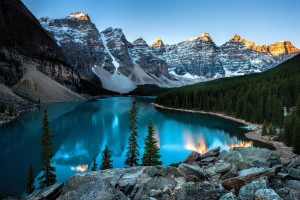 Sights of Canada are primarily amazing nature, then – architectural monuments, mostly modern, and finally – the culture of aboriginal tribes. Vacationers on the slopes of Tremblan can go on an excursion to Montreal, Quebec, Toronto or Ottawa. Those who are skiing in British Columbia, should go to Vancouver, Richmond and Steveston.
Sights of Canada are primarily amazing nature, then – architectural monuments, mostly modern, and finally – the culture of aboriginal tribes. Vacationers on the slopes of Tremblan can go on an excursion to Montreal, Quebec, Toronto or Ottawa. Those who are skiing in British Columbia, should go to Vancouver, Richmond and Steveston.
For centuries, the elements of the cultures and traditions of Canadian Aborigines, French, English and later immigrants made up a single Canadian culture, also strongly influenced by the linguistic, geographic and economic factors of its neighbor, the United States. Canada is often described as a very progressive, diverse and multicultural country, which is definitely worth visiting.
Contents
- Place to visit number 1: Gastown
- Place to visit number 2: Old Montreal
- Place to visit number 3: The Cathedral of Our Lady in Ottawa
- Place to visit number 4: Jasper National Park
- Place to visit number 5: House of Sir George-Etienne Cartier
- Place to visit number 6: Canadian Museum of Contemporary Photography
- Place to visit number 7: Montreal Biodome
- Place to visit number 8: National Park Yoho
- Place to visit number 9: Harbor Center
- Place to visit number 10: The Central Experimental Farm
- Video
Place to visit number 1: Gastown
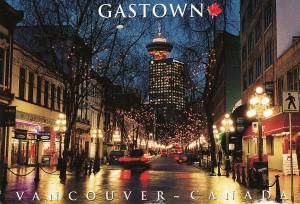 Gastown is the oldest legendary district in Vancouver. Many think that if the age of the city does not exceed three hundred years, then it is hardly possible to find the old days there. Of course, on the American continent, the notions of the old and the new are not at all like those of the European one, but there is a history here. And Gastown is the best proof of that.
Gastown is the oldest legendary district in Vancouver. Many think that if the age of the city does not exceed three hundred years, then it is hardly possible to find the old days there. Of course, on the American continent, the notions of the old and the new are not at all like those of the European one, but there is a history here. And Gastown is the best proof of that.
The main focus of the history of Vancouver – Gastown district – is in its heart. Having come here, you seem to be in another period of time and you can observe the city as it was originally:
- Architecture here clearly reminds of the long and brilliant reign of Queen Victoria,
- the streets are also laid in the traditions of the era – narrow, with a lot of transitions and gateways.
- In the courtyards, which are not so easy to discover, stylish restaurants and shops are hidden.
Needless to say, Gastown is a place that attracts crowds of tourists. We will tell about several of its sights:
- Blatant Jack: Actually, in honor of this very Jack Gastown got its name. Jack Dayton was its first resident, due to the nature of the character, those who communicated with him gave the nickname Gassy, which means “talkative”as Jack had the habit of making any conversation a long monologue, not caring at all about the attention of listeners. The statue of Jack is now installed in Maple Tree’s Gestaune Park and is one of the most popular sights.
- Steam clock: The steam clock, which is driven by an underground generator, is a real symbol of the city. Every fifteen minutes of an impressive building a deafening battle is heard, and once a hour an entire cloud of steam bursts out. This unique mechanism was created according to the drawings of the 19th century in the 70s, in protest of the townspeople against the demolition of Gastown, which was conceived by the city authorities.
- Hotel Europe: It is in this area of the city there is the hotel “Europe”, built in the early 20th century. It was the first building in Vancouver, and, besides, the hotel that was built with refractory materials. Nowadays it is closed to the guests, but you can appreciate the original decoration of the building from the outside – it is a combination of Italian tiles and windows taken with lead glass.
- Secrets of the Vancouver police: In Gastown there is also a very original museum, similar to which not everyone can boast, even the big cities of the world. This is a police museum. It is located, to put it mildly, not in the most picturesque corner of Gastown, includes the morgue and the autopsy section, and many other various “prosaic” elements of the police case. In the exposition you will see counterfeit money, firearms, a description of unsolved cases, with all the “evidence” that you managed to collect.
Interesting: In Gastown you will find an abundance of souvenir shops, many boutiques specialize in the sale of designer furniture. Some tourists visit such salons, almost like museums.
Back
Place to visit number 2: Old Montreal
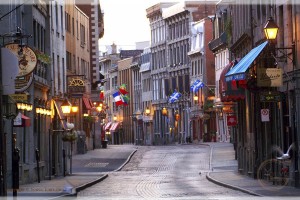 As you might guess, this is the oldest part of the city, where some buildings of the period of New France still survive. It is located in the Ville-Marie district, north of the St. Lawrence River.
As you might guess, this is the oldest part of the city, where some buildings of the period of New France still survive. It is located in the Ville-Marie district, north of the St. Lawrence River.
In the territory of Old Montreal there are such bright attractions as:
- the old port,
- the Town Hall,
- the Basilica of Notre-Dame,
- the Montreal Clock Tower,
- the Jacques Cartier Bridge.
Most of Old Montreal, the Ministry of Culture of Quebec declared the historic area in 1964.
The history of this relatively ancient region begins with the founding of the confluence of the St. Lawrence and the Little River in the settlement of Will-Marie in 1642 and the fort of Societe-Notre-Dame de Montreal in 1643. The first streets of the colony were laid over the existing paths and Received the names of Ryu-Notre-Dame, Ryu-Saint-Paul and Ryu-Saint-Jacques. Their original masonry still glimpses here and there.
The brightest architectural landmark of Old Montreal and Montreal in general is the magnificent basilica of Notre Dame, built in 1829.
Interesting attractions that appeared in Old Montreal and later, during the years of British rule. At this time, Montreal suffered greatly from constant fires, but grew and was rebuilt even more actively. The oldest city monument, the column of Nelson, appeared here in 1809 on the square, which was named New Market (from 1845 it is called the square of Jacques Cartier).
Interesting: In 1873, here, on the territory of the former Jesuit monastery garden, the impressive and magnificent building of the City Hall, one of the most striking in the city, grew.
Back
Place to visit number 3: The Cathedral of Our Lady in Ottawa
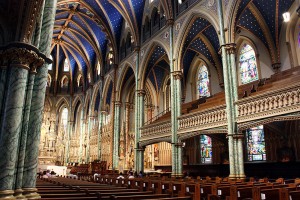 It is built on the site of the wooden church of St. James. The cathedral, located in the Lower City, is the oldest and largest church in Ottawa. The first project of the neoclassical cathedral was created in 1841, and for three years the lower tier of the church was built. But then it was decided to change the design to neo-gothic, more popular at the time. Therefore, the final design looks somewhat eclectic. It was completed in 1846, although two symmetrical spiers adorned the cathedral two years later. The last reconstruction of the cathedral was completed at the end of the millennium. In 1990, the Cathedral was added to the number of national monuments.
It is built on the site of the wooden church of St. James. The cathedral, located in the Lower City, is the oldest and largest church in Ottawa. The first project of the neoclassical cathedral was created in 1841, and for three years the lower tier of the church was built. But then it was decided to change the design to neo-gothic, more popular at the time. Therefore, the final design looks somewhat eclectic. It was completed in 1846, although two symmetrical spiers adorned the cathedral two years later. The last reconstruction of the cathedral was completed at the end of the millennium. In 1990, the Cathedral was added to the number of national monuments.
The sharp Gothic spiers of the cathedral are covered with sheet iron, which is typical of Franco-Canadian churches, and shine in the sun. On the spiers there are bells. The spiers and the gilded statue of the Madonna are clearly visible from Parliament Hill. Here you can see stained glass and hundreds of statues, including thirty wooden sculptures on the choirs.
The interior of the cathedral is rich and beautifully decorated with carved elements. The first series of stained glass was placed in the cathedral in 1879, but most of them were replaced in the 1950-1960’s. Particularly beautiful there is the large window directly above the main entrance to the cathedral: on its stained-glass windows you can see the sculptures of:
- St. Patrick,
- St. Paul,
- Our Lady,
- St. Joseph,
- St. Peter
- and John the Baptist.
Interesting: The most notable detail is, of course, a rich gothic gilded altar. Also in the cathedral there are the tombs of Governor-General George Wannier and Prime Minister Wilfrid Lurie.
Back
Place to visit number 4: Jasper National Park
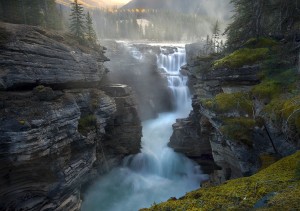 Jasper National Park is one of Canada’s largest reserves, located in Alberta, 320 kilometers west of Edmonton and 290 kilometers from Calgary. The park was founded in 1907, its total area is 10,800 sq. km.
Jasper National Park is one of Canada’s largest reserves, located in Alberta, 320 kilometers west of Edmonton and 290 kilometers from Calgary. The park was founded in 1907, its total area is 10,800 sq. km.
In the park there are more than 200 species of:
- birds,
- deer,
- moose,
- grizzly bears,
- wolverines,
- wood porcupines
- and many other animals.
The park itself consists almost entirely of beautiful coniferous forests.
Interesting: Jasper is one of the most visited reserves in Canada, attracting a huge number of tourists with both beautiful nature and beautiful ski slopes.
Back
Place to visit number 5: House of Sir George-Etienne Cartier
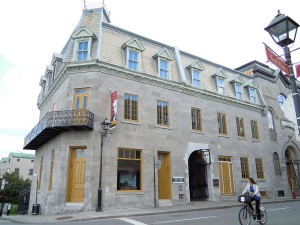 This place is a kind of guide to the 19th century. It is dedicated to the life of the famous Montreal lawyer, the father of the Confederation and the former Prime Minister of Canada. Visitors to the luxuriously restored mansion-museum are greeted by guides in historical costumes, and children are told in fascinating playful form about the manners of the two-centuries old.
This place is a kind of guide to the 19th century. It is dedicated to the life of the famous Montreal lawyer, the father of the Confederation and the former Prime Minister of Canada. Visitors to the luxuriously restored mansion-museum are greeted by guides in historical costumes, and children are told in fascinating playful form about the manners of the two-centuries old.
Since 1985, in the Cartier Mansion, listed as a national historical site, there is a museum. Here you can get acquainted with the intimate and cozy atmosphere in which the Canadian bourgeois lived in the 19th century. In addition, one can see the only Victorian interior, open to public inspection, throughout Montreal.
Interesting facts:
- The mansion was built in 1837 by an unknown architect, and Cartier purchased it in 1848. This residential area was very popular, and Cartier decided to settle here to practice law. The new owner installed a heating system and gas lighting and lived in the house for seven years.
- In 1871, the house was rebuilt for a hotel. From 1881 to 1884 the building was called the Grand Pacific Hotel.
- In 1893, when the Berry Tunnel, which was under Notre Dame, was designed, the house was partially taken over by the city of Montreal, and in 1939 the mansion was converted to a boarding house.
- In 1964, the building opened the National History Museum of Canada, and in 1973 it became the property of the federal government.
- The Cartier Historical Museum was opened here in 1985.
In architectural terms, the mansion consists of two stone buildings, united by a common neoclassical style. With the partial expropriation of 1893, the height of the mansion was reduced by more than three meters, and the structure itself was changed in order.
Tourists usually bypass this sight of Montreal side: it is not too conspicuous, there is little information about it, and the identity of Sir George-Etienne Cartier is interesting first of all to the Canadians. Therefore, you have a good chance to see the mansion alone, and it’s worth it: the interior is really very beautiful, besides
the administration provides various entertainment programs – for example, a photo shoot in the costumes of the era.
Interesting: On weekends, visitors are met by costumed characters, and entertainment for children is provided. True, the mansion is very small, and as a whole with inspection it is quite possible to keep within half an hour.
Back
Place to visit number 6: Canadian Museum of Contemporary Photography
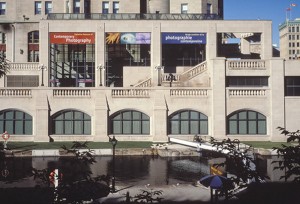 The Canadian Museum of Modern Photography was opened in 1985 as a gallery of the best Canadian art and documentary photographs. The museum works under the National Gallery of Canada and since 2009 has shared one building with it. The collection of photographs presented in the museum began to form as early as 1939.
The Canadian Museum of Modern Photography was opened in 1985 as a gallery of the best Canadian art and documentary photographs. The museum works under the National Gallery of Canada and since 2009 has shared one building with it. The collection of photographs presented in the museum began to form as early as 1939.
Today it contains more than 160 thousand works, including:
- slides,
- negatives and multimedia objects,
- as well as more than 17 thousand photographic prints.
The museum in Ottawa is the only federal photo museum in the country. Annually in the museum there are about 4 exhibitions, both personal and group ones. Most of them are shown not only in Ottawa, but also throughout Canada. Also in the museum there are meetings with photographers and other events, including parties with DJs and treats.
Despite the fact that the collection was collected for more than 40 years, it was decided to display the archives for public viewing only in 1985, after a structural unification with the National Gallery of Canada.
Until 2006 the museum occupied its own building, built on the basis of the former railway tunnel near Chateau Lurie. But in 2006, a leak was found in the underground room that was located near the Rideau Canal, and the museum was closed. In 2009, after the completion of the repair, the building was needed for other needs, and the exposition was moved to the national gallery.
Interesting: Among the photographers whose works can be seen in the museum there are Robert Burdo, Evergon, Barbara Astman, Michael Kampyo, Roy Kiyoka, Mika Leksye.
Back
Place to visit number 7: Montreal Biodome
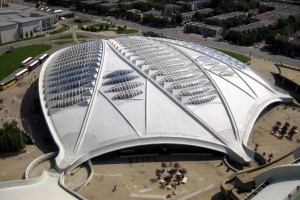 Montreal Biodome is at the same time a scientific center and an ecological zoo, combining five mini-copies of ecosystems at once:
Montreal Biodome is at the same time a scientific center and an ecological zoo, combining five mini-copies of ecosystems at once:
- South American rainforest,
- North American Lavrentian mixed forest,
- marine zone – a copy from St. Lawrence Bay,
- Arctic and Antarctic Arctic zone.
In the Amphitheater, the Environment demonstrates popular science films, lectures on the protection of the environment, the maintenance of the ecosystem and the preservation of natural beauty. Where else can you see several thousand animals of 250 completely different species – from tigers to beetles, from baboons to anteaters?
By the way, Montreal BioDom is not accidentally located next to the Olympic stadium: its construction was timed to coincide with the “Olympics-1976”, and in those years it performed quite sports-prosaic functions – it was a velodrome. After only 12 years, it was decided to scale the building into a unique complex.
Interesting: Today, the Biodome is not just a zoo, an aquarium or an insectarium, it’s all together, mixed and served under sauce care for the environment and eliminating the illiteracy of the young people of the planet.
Back
Place to visit number 8: National Park Yoho
![canada-yoho-national-park-lake-wallpapers_47012_2560x1600[1]](https://www.43places.com/wp-content/uploads/2017/05/canada-yoho-national-park-lake-wallpapers_47012_2560x16001-300x188.jpg) How do you like the river with the name Lying horse? Or Laughing Falls? And the waterfall “That’s great!” The original names, aren’t they? They can be found in the park of Yoho, which in translation from the language of the Indians means “That’s it!”. It is located in the Rocky Mountains on one and a half thousand square kilometers. And there really are many reasons to visit this place.
How do you like the river with the name Lying horse? Or Laughing Falls? And the waterfall “That’s great!” The original names, aren’t they? They can be found in the park of Yoho, which in translation from the language of the Indians means “That’s it!”. It is located in the Rocky Mountains on one and a half thousand square kilometers. And there really are many reasons to visit this place.
For example:
- mountain peaks, from where fast rivers flow, have their own characteristics, overgrown with bizarre legends.
- The already mentioned Lying horse is famous for its violent character: it is believed that it can easily absorb a traveler. Tourists are rescued by a bridge that can be easily navigated to the other side.
- Emerald lake justifies its name – the water in it is bright green. In clear sunny weather, the water surface looks like a huge mirror. True,
- swimming here is not particularly comfortable, since water comes from glaciers.
- Waterfall “That’s great!” is actually called Takakkou in the Indian dialect. It flies down from a height of 381 meters. It is worth noting that it lives exclusively on warm days, as it feeds on melting ice. Its brother – Laughing – is only 30 meters high. It is called so because it makes noise resembling a horrible laugh.
Interesting: Fauna of Yoho is represented by moose, deer, badgers, squirrels, bears, roe deer. Also there are more than 180 species of birds.
Back
Place to visit number 9: Harbor Center
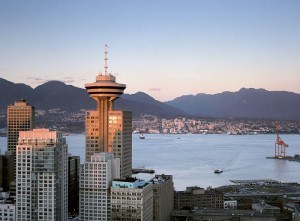 If you are in Vancouver, a city on the western Pacific coast of Canada, you should definitely see this scientific, sports and industrial center of the country from above. Why? Because its location, architecture, combination of how the city “inscribed” into the natural environment is really unique. Vancouver is located between two huge snow-capped mountain peaks – Mount Seymour and Soliburn. The shore of the Pacific Ocean and the port – here they are, close by. Arteries and veins of rivers and streams that cut the city, as well as bridges of different sizes and lengths are another touch of the landscape that you can see. Interested in? Then you are waiting for the Harbor Center – the tallest building in Vancouver with a lookout tower, where all the guests of the city are eager to climb, and the locals do not hesitate to spend a couple of hours of weekend to visit Harbor.
If you are in Vancouver, a city on the western Pacific coast of Canada, you should definitely see this scientific, sports and industrial center of the country from above. Why? Because its location, architecture, combination of how the city “inscribed” into the natural environment is really unique. Vancouver is located between two huge snow-capped mountain peaks – Mount Seymour and Soliburn. The shore of the Pacific Ocean and the port – here they are, close by. Arteries and veins of rivers and streams that cut the city, as well as bridges of different sizes and lengths are another touch of the landscape that you can see. Interested in? Then you are waiting for the Harbor Center – the tallest building in Vancouver with a lookout tower, where all the guests of the city are eager to climb, and the locals do not hesitate to spend a couple of hours of weekend to visit Harbor.
Some facts about the Harbor:
- The opening of the tower occurred in 1977, and it was personally done by Neil Armstrong – the first man on Earth who set foot on the Moon (landing on which, by the way, took place shortly before the opening of the Harbor Center). The popularity of the cosmonaut was beyond limits in those years, so it is clear why he was invited to open the city structure, to which the creators had high hopes.
- The height of the tower is 177 m, and an observation deck with a three-hundred and sixty-degree circular view is located at a height of 130 m.
Interesting: If you are lucky, and the weather will be fine, and, most importantly, clear, then in addition to what has already been listed, you will also see Baker Mountain, which is not in Canada at all, but in the United
States, as well as various, but equally picturesque , Canadian and American islands.
Back
Place to visit number 10: The Central Experimental Farm
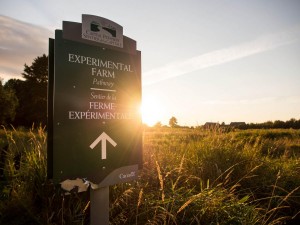 It is an operating farm and, at the same time, a research center. Despite its rural nature, today it is almost in the center of the city, surrounded by a sprawling Ottawa. The territory of the farm is 4 square km and it has several interesting objects. All together it is considered a national historical sight of the country, and the majority of buildings are under state protection.
It is an operating farm and, at the same time, a research center. Despite its rural nature, today it is almost in the center of the city, surrounded by a sprawling Ottawa. The territory of the farm is 4 square km and it has several interesting objects. All together it is considered a national historical sight of the country, and the majority of buildings are under state protection.
Today it is a good place:
- to take a walk in the fresh air,
- admire the arboretum and gardens or hide from the weather in an agricultural museum.
The Museum of Agriculture and Food occupies a characteristic farmhouse of contrasting white and red color. The museum’s exhibitions are devoted to:
- energy saving,
- food storage,
- beekeeping,
- healthy nutrition
- and the history of agriculture.
The exhibition displays ancient agricultural implements and equipment, including the first tractors. In addition, the museum has a small zoo with pets: alpaca, horses, sheep, cows – with which children can communicate directly near.
Interesting: You can also inspect the old barn or even have a picnic on the farm, in a specially designated area. Plus, guests of the museum are invited to buy fresh farm products and home-made products.
Back